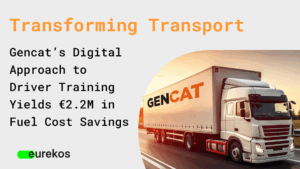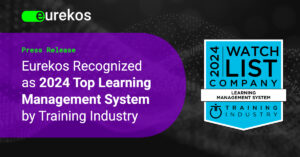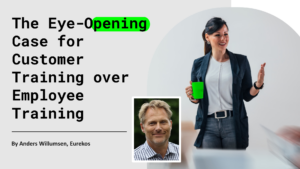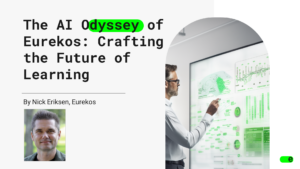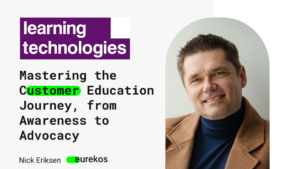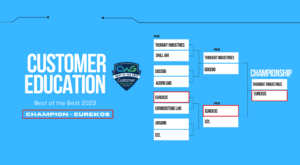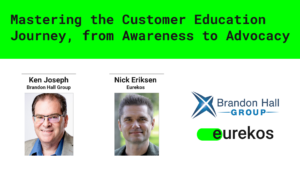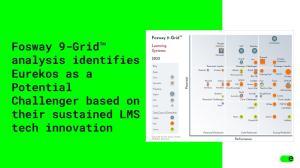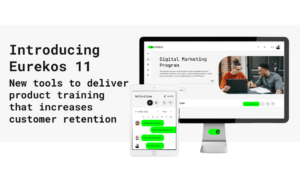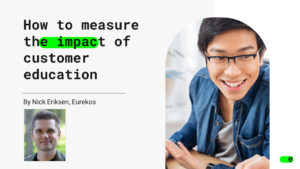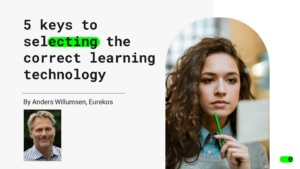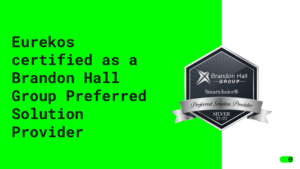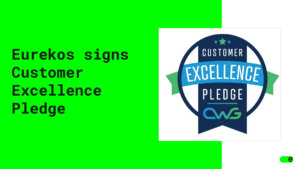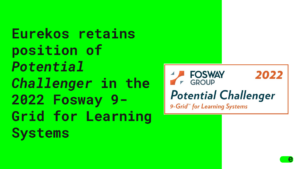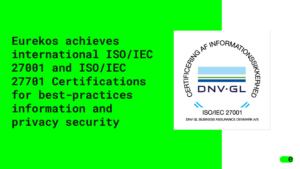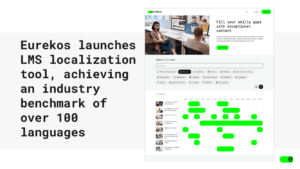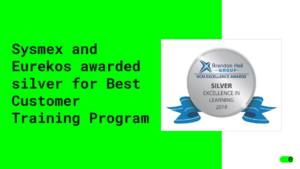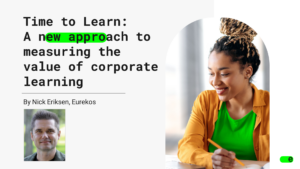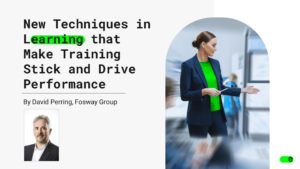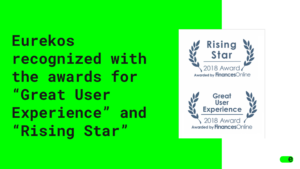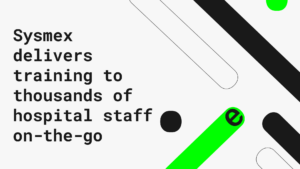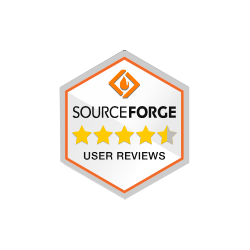By Nick Etlar Eriksen
Beyond Content: Why Advanced Facilitation Is Now the Core of Learning Strategy
The other day, I overheard a CLO confidently say their organization had “solved learning” by putting better content into people’s hands. It’s the old training myth: build the course, deliver the learning material, check the box. But that kind of thinking misses 75% of what actually makes learning work today:
- Content
- Administration
- Facilitation
- Analytics
In external training (where you’re managing not just employees but customers, partners, and global certification networks), getting content right is only one part of the equation. And that became harder to ignore when everything was forced to shift at once during the pandemic.
Based on what I see every day in my work at Eurekos, I usually explain it like this: What changed after COVID wasn’t just technology. Behavior shifted, too. For years, organizations stuck with familiar, content-driven models because scheduled classes and high completion rates gave the appearance of success. But as McKinsey research shows, the pandemic exposed how much these models were failing to build real capabilities, prompting nearly 70% of organizations to significantly expand skill-building efforts in response. And when external events forced them to rethink delivery, they discovered something astonishing: they could do more. A lot more.
Since then, I’ve seen previously hesitant organizations explore advanced facilitation models they wouldn’t have touched five years ago. Content still plays a crucial role, of course, but it’s really only about 25% of learning delivery now. The real work happens in the facilitation layer: connecting business processes, people, technology, and data into one flow. In other words, we’re designing entire learning ecosystems to drive measurable outcomes.
Let me explain what I mean by that and why I think facilitation matters now more than ever.
What Advanced Facilitation Really Means
Every decision made during learning delivery triggers a chain of business processes. Enrollments create approval flows. Certifications affect system access. Role changes require new training paths.
Advanced facilitation brings all of these moving parts together. Instead of handling them manually, organizations can now design systems where business rules, learner data, and technology operate in sync.
For example, facilitation can:
- Handle decentralized invitation workflows
- Manage eligibility checks
- Automatically enforce data privacy and retention rules across multiple regions
- Control access to content based on qualifications or prior experience
- Automate recurring certifications, and
- Ensure that what each learner sees matches their exact profile.
But that’s not all: Behind the scenes, it integrates with HR systems, partner management tools, and customer data to guarantee that training reflects the learner’s actual role and business context. And when organizations start connecting these systems, the complexity grows fast, because the business needs themselves keep expanding.
So, the next question is: how do you keep that complexity from spinning out of control?
Managing Complexity Without Overcomplicating: Real-World Case Studies in Action
Today’s training providers expect personalization for multiple audiences, adaptive pathways responding to individual needs, and learning automation that integrates with existing business processes.
This complexity we’re seeing isn’t something we invented—it comes from client needs. Whether it’s Swiss Re managing global event logistics or the European Space Agency (ESA) processing hundreds of applicants across different countries, these organizations require systems that can handle multiple processes, multiple people, and multiple steps, all while keeping the business in control.
That’s why we also advise our clients: don’t go “bananas” with features. Complexity only works when it’s tied directly to clear business goals.
But let me show you exactly what this looks like in our day-to-day practice.
Swiss Re
110 contact managers coordinating high-end international conferences through Excel spreadsheets—that was Swiss Re’s reality before advanced facilitation transformed their approach. Each event required extensive back-and-forth communication to determine optimal guest lists, coordinate logistics, and handle VIP requirements.
Now, imagine replacing that entire manual process with something resembling marketing automation. That’s exactly what Eurekos did for them: Contact managers can directly invite clients via the LMS, with the system automatically handling reminder schedules, VIP overrides, and localized versions within a centralized facilitation layer. This exemplifies business-process automation deeply integrated into the LMS—not simply managing learning content but running entire event operations digitally.
ESA
The European Space Agency faced a different kind of complexity: managing highly sensitive application workflows across 28 national agencies and hundreds of universities. Applicants submit personal data, upload certifications, and complete extensive forms—all securely processed within the LMS.
In this case, complex privacy rules automatically govern data retention and deletion. Evaluation panels access application data directly, eliminating the spreadsheets and manual data entry that previously consumed enormous resources. The entire process stays fully auditable and compliant, even as thousands of participants move through multi-stage evaluations.
Sysmex
From nearly 100% instructor-led training to reaching over 100,000 users globally while maintaining scientific accuracy, Sysmex’s transformation demonstrates what’s possible when facilitation is strategically implemented. Fourteen affiliate domains now provide localized experiences with personalized learning portals featuring video content, webinars, 3D models, and social learning options.
The results speak volumes: 10,000+ active monthly learners, 68% growth in one year, reduced support costs, and entirely new revenue streams from training content. Mobile learning capabilities enable offline access for field-based technicians, overcoming connectivity barriers while improving customer competency across global markets.
But how do you balance scale with individual learner needs?
Automation and Personalization: Making Learning More Human
Whenever automation comes up, some worry it will strip away the human touch. But my experience says otherwise. Done right, automation makes learning more human.
By offloading repetitive administrative tasks to the system, we create space for experts to focus on what only humans can do. In that sense, smart facilitation uses automation to optimize where humans engage, not eliminate them. Learners get the right content, the right support, and the right interventions at exactly the right time.
Three specific approaches demonstrate how this transformation happens:
1. Freeing Experts to Intervene Where It Matters
Subject matter experts spend far too much time on administrative tasks that add zero educational value. Creating reports, sending reminders, tracking completions, managing enrollment—these activities consume expert capacity without improving learner outcomes.
Intelligent automation handles repetitive, rules-based tasks automatically. This allows instructors and SMEs to focus exclusively on interventions requiring human judgment: coaching struggling learners, facilitating complex discussions, and providing personalized feedback. Such targeted use of expertise makes facilitation more scalable and sustainable while protecting SME capacity as training programs grow.
Human intervention happens precisely when and where it creates maximum impact, transforming expert time from a bottleneck into a strategic advantage.
2. Building Adaptive Pathways to Guide Learners Efficiently
Adaptive learning allows us to dynamically adjust learning journeys based on actual learner performance, behaviors, and certifications. If someone aces a prerequisite assessment, they can skip unnecessary modules. If another learner struggles, optional support modules or live coaching sessions automatically unlock.
For instance, for a learner who fails a key assessment multiple times, the system can open direct instructor access or schedule live remediation sessions. That way, we target interventions precisely where they’re needed without overburdening resources or slowing down learners who are progressing smoothly.
3. Using Personalization to Make Learning More Responsive and Relevant
Personalization goes one layer deeper, tailoring learning journeys to each individual’s job role, experience, and goals. During onboarding, learners complete profiles and self-assessments, which inform their initial pathways. From there, ongoing performance data continuously adjusts content recommendations.
Think of it as a skilled instructor who knows which student needs extra practice and which one is ready for advanced work. By embedding that kind of responsiveness into the LMS, we ensure every learner receives personalized support, without requiring instructors to micromanage thousands of users manually.
The irony is, the more we automate intelligently, the more human learning becomes. Advanced facilitation doesn’t eliminate personal interaction; it just uses it better.
AI in Learning: What’s Real, What’s Coming?
Any mention of AI in learning always sparks big expectations. But let’s be pragmatic: AI isn’t magic. It’s a collection of specific tasks, and those tasks depend entirely on strong data foundations.
Right now, one of the most valuable applications we see involves AI-powered learning recommendations and content curation. For example, Eurekos can analyze a learner’s profile, historical data, and existing content library to recommend targeted training paths or flag knowledge gaps. That’s curation—not full content creation.
Where AI struggles is designing formal learning pathways for complex product knowledge or certifications. Those still require human expertise. You can’t train someone to operate specialized medical equipment or comply with evolving safety standards solely through algorithmic shortcuts. That’s why formal learning design remains a deeply human task.
Without doubt, AI will continue accelerating these developments. But it won’t replace experts. It will augment them, helping us scale adaptive learning, surface patterns, and suggest more personalized experiences at speed.
Designing for Lasting Business Impact
In the end, all learning efforts come down to one question: Are we seeing real behavioral change? Completion rates are easy to measure, but finishing a course doesn’t guarantee real-world impact. What matters is whether learners apply their knowledge effectively— whether they change how they work.
Advanced facilitation makes that measurable. Post-training evaluation goes far beyond a final quiz, drawing on feedback from managers, peers, and learners themselves weeks or even months later. Are employees applying new skills on the job? Has performance improved? Are customers using products more effectively? That’s where the business value starts to show.
Certification management supports this process by ensuring credentials reflect not just participation, but proven competence. When behavioral change follows, organizations gain real evidence that learning is driving both performance and business outcomes.
Key Takeaways: The Facilitation Imperative
Facilitation is the invisible layer that turns learning content into business results. Without sophisticated orchestration, even the best training resources remain just information sitting in systems, waiting for someone to find it useful.
For these reasons, today’s learning leaders must build resilient, business-integrated ecosystems that combine technology, human expertise, and intelligent workflows. That’s why the greatest strategic advantage comes from sophisticated facilitation that:
- Aligns learning delivery with real business processes
- Automates complex administration at scale
- Personalizes pathways based on each learner’s profile
- Frees experts to focus on meaningful interventions
- Integrates data from across the business ecosystem
- Tracks real-world application and behavioral change.
We’ve spent years perfecting content. Now it’s time to perfect the system around it.



